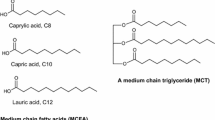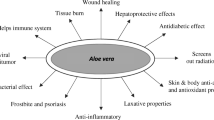Abstract
Biologically active components in lipids (fatty acids, phospholipids, sterols and tocopherols) from three varieties of Madia sativa seeds introduced in Bulgaria (BGR 457 and BGR 458 with German origin, and BGR 459 with US origin) were investigated. Glyceride oil in the seeds was found to be 36.6, 34.2 and 35.4%, respectively. Total phospholipid content was 2.4, 1.7 and 2.6% and the main classes were phosphatidylcholine, phosphatidylinositol and phosphatidylethanolamine. The amount of sterols in the oil was 0.3% for all samples and the major component was β-sitosterol, followed by campesterol and stigmasterol. Total tocopherols in the oils were 768, 795 and 856 mg kg−1, respectively and α-tocopherol predominated (more than 70.0%). Fatty acid composition of triacylglycerols and sterol esters was also established. Main fatty acids in triacylglycerols were linoleic (47.5–50.5%), oleic (30.2–32.4%) and palmitic acids (13.0–13.5%). The content of saturated fatty acids (palmitic and stearic) in sterol esters (40.1–50.9%) was significantly higher than in triacylglycerols (18.3–19.4%).
Similar content being viewed by others
References
Acevedo F, Rubilar M, Shene C, Navarrete P, Romero F, Rabert C, Jolivet P, Valot B, Chardot T (2012) Seed oil bodies from Gevuina avellana and Madia sativa. J Agric Food Chem 60:6994–7004
Angelini L, Moscheni E, Colonna G, Belloni P, Bonari E (1997) Variation in agronomic characteristics and seed oil composition of new seed crops in central Italy. Ind Crops Prod 6:313–323
AOAC - Association of Official Analytical Chemist (2016) Official methods of analysis, 20th edn. AOAC, Washington, DC
Christie WW (2003) Lipid analysis, 3rd edn. The Oily Press, Bridgwater
CODEX STAN 210-1999 (2015) Standard for named vegetable oils. Revision: 2001, 2003, 2009. Amendment: 2005, 2011, 2013 and 2015
Copeland LO, McDonald M (2012) Principles of Seed Science and Technology, 4th edn. Springer Science & Business Media, New York
Facciola S (1998) Cornucopia—a source book of edible plants, 2nd edn. Kampong Publications, Vista
Folch J, Lees M, Sloane-Stanley GH (1957) A simple method for the isolation and purification of total lipides from animal tissues. J Biol Chem 226:497–509
Gunstone FD, Harwood JL, Padley FB (2007) The lipid handbook, 3rd edn. Chapman Hall, London
ISO 10540-1:2014. Animal and vegetable fats and oils. Determination of phosphorus content. Part 1: colorimetric method
ISO 12228-1:2014. Part 1: animal and vegetable fats and oils. Determination of individual and total sterols contents. Gas chromatographic method
ISO 12966-1:2014. Animal and vegetable fats and oils. Gas chromatography of fatty acid methyl esters. Part 1: guidelines on modern gas chromatography of fatty acid methyl esters
ISO 659:2014. Oilseeds. Determination of oil content (Reference method)
ISO 6886:2016. Animal and vegetable fats and oils. Determination of oxidative stability (accelerated oxidation test)
ISO 9936:2016. Animal and vegetable fats and oils. Determination of tocopherol and tocotrienol contents by high-performance liquid chromatography
Marekov I, Zlatanov M, Angelova-Romova M (2010) Sterol composition of oils from Bulgarian varieties of sunflower. Bulg J Agric Sci 16(2):158–162
Munshi SK, Sukhija PS, Bhatia IS (1983) Lipid biosynthesis in developing kernels of almond (Prunus amygdalus). Phytochemistry 22(1):79–83
O’Brien RD, Farr WE, Wan PJ (2004) Introduction to fats and oils technology, 2nd edn. AOCS Press, Champaign
Rusinek R, Rybczyński R, Tys J, Gawrysiak-Witulska M, Nogala-Kałucka M, Siger A (2012) The process parameters for non-typical seeds during simulated cold deep oil expression. Czech J Food Scis 30(2):126–134
Schmeda-Hirschmann G (1995) Madia sativa, a potential oil crop of Central Chile. Econ Bot 49(3):257–259
Schneiter R, Daum G (2006) Analysis of yeast lipids. In: Xiao W (ed) Yeast protocols (Methods in molecular biology), vol 313, 2nd edn. Humana Press, Totowa, pp 75–84
Zardini E (1992) Madia sativa Mol. (Asteraceae-Heliantheae-Madiinae): an ethnobotanical and geographical disjunct. Econ Bot 46(1):34–44
Zlatanov M, Antova G, Angelova-Romova M, Damyanova B, Momchilova S, Marekov I (2008) Comparative characterization of vegetable oils from Bulgarian varieties of sunflower. Food Process Ind Mag 57(3):45–47
Zlatanov M, Antova G, Angelova-Romova M, Momchilova S, Dimitrova R, Marcheva M (2015) Detailed characterization of lipids in safflower varieties grown in Bulgaria. La Rivista Italiana delle Sostanze Grasse 92(4):279–288
Author information
Authors and Affiliations
Corresponding author
Rights and permissions
About this article
Cite this article
Antova, G.A., Angelova-Romova, M.Y., Petkova, Z.Y. et al. Biologically active components in Madia sativa seed oil. J Food Sci Technol 54, 3044–3049 (2017). https://doi.org/10.1007/s13197-017-2739-9
Revised:
Accepted:
Published:
Issue Date:
DOI: https://doi.org/10.1007/s13197-017-2739-9




